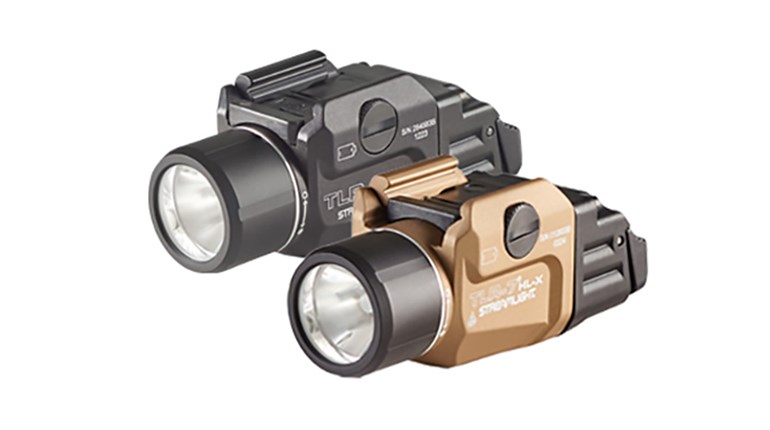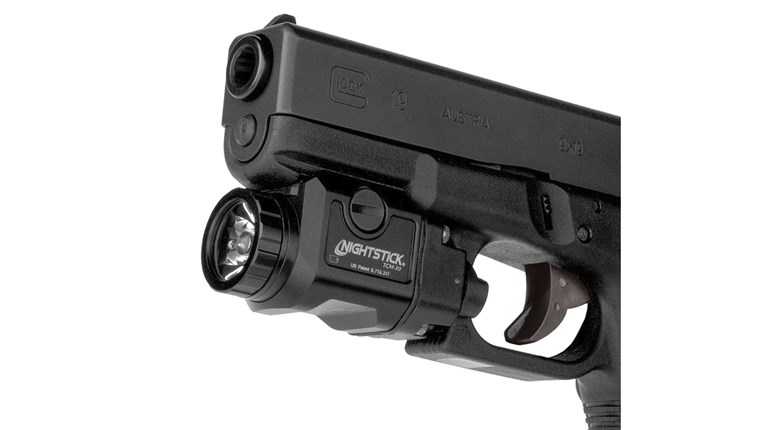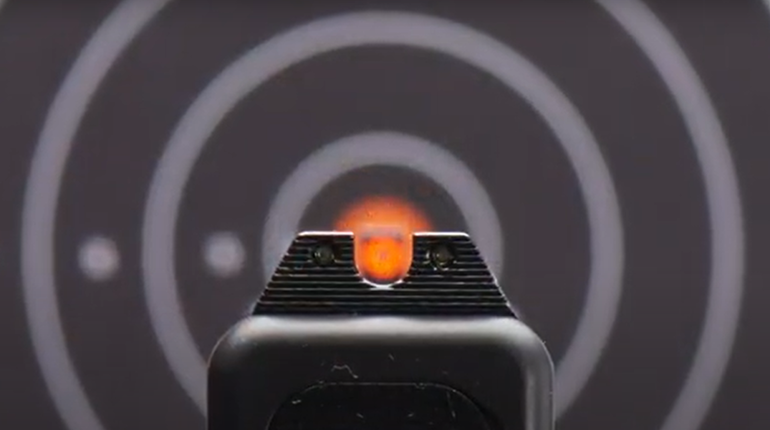
If you are up for a good challenge, try swinging a dead cat around the optic industry without hitting a single red-dot sight [Editor’s note: No cats were harmed in the writing of this article]. You cannot do it because they are everywhere. Sizes, configurations and features vary widely, but these non-magnified, electro-optical aiming devices are available at all economic stops along the price line. Red dots are suitable for everything from crossbows to crew-served weapons with nary a projectile launcher in between left unaccounted for. Knowing the differences between the main types should help you sort through the options and explain some of the nuances of these handy little, eye-friendly tools.
Regardless of the type of red dot you consider, the sheer volume of options is astounding. Features like auto-off, power-up on movement, day- and night-vision settings, selectable or programmable reticles, wide rheostat adjustment ranges and multiple mounting systems abound.
We use the “red-dot” moniker to describe anything that places a non-magnified, illuminated aiming point between our eyes and a target, but in truth, all dot-style sights are not the same. Setting aside the different reticle colors and shapes and the nearly limitless range of features available today, these optics have internal and external differences that place them in either the reflex- or holographic-sight categories.
From the shooter’s perspective, internal red-dot differences really do not matter. As long as the aiming point is where you expect it to be when the optic is aligned with your target and your zero is maintained, the details about how that dot/circle/cross/dog bone/smiley face got there are not important in that moment. Nonetheless, some of the pesky details that delineate the different types of non-magnified optics do affect their utility.
I grew up with iron sights, so when I saw ads for the Armson Occluded Eye Gunsight (OEG) in the early 1980s, the red-dot concept made no sense to me. After handling one on a captured weapon during the Panama invasion, I realized that with practice, the occluded eye technique had merit for close-range work. The OEG uses different technology than the optics discussed here, but as near as I can tell, this sight started the red dot bouncing down the road.
My red-dot experience is mostly limited to the user side of the equation. So, I reached out to subject matter experts from within the electro-optics industry in order to better understand some of the technical aspects of these sights, hoping to pass on what I learned from them. Any logical information that follows can be credited to my sources; the confusing parts are the exclusive dominion of the author.

Reflexive Terminology
Reflex sights are far and away the most commonly encountered red-dot optics. But the word “reflex” is thrown around enough that I was not really sure what should and shouldn’t be in this category. Jack Lapham, SIG Sauer Electro-Optics product manager, happily sorted me out on the topic. Lapham explained the differences between the two different types of reflex optics: open and enclosed. SIG manufactures both styles and has an ever-expanding, loyal, electro-optical customer base.
Regardless of how things are arranged internally, all reflex sights use some form of light emitter—Light Emitting Diodes (LED) being the most common—to project a reticle onto a lens. This light is then reflected back to the shooter’s eye. The reticle image is superimposed over the target image, which is viewed through the same lens. A quick glance makes them appear together, but if you look closely, the reticle will actually float between you and the target due to the reflex-projection system and lens array.
Smaller, open-style reflex sights are suitable for handguns while larger models are common on SMGs, carbines, rifles, shotguns and just about every other projectile launcher that has an optical-mounting surface. Enclosed reflex optics are typically larger and heavier, but manufacturers are continually shrinking these sights, too.
While open reflex models such as SIG’s Romeo1 Pro, Trijicon’s RMR and Bushnell’s Advance Reflex Sight are usually the best way to achieve a minimalist profile, Lapham pointed out that their light emitters are unprotected. These LEDs can be partially or totally obscured by water, mud or other foreign debris in rough environments, which must be cleaned off before the optics will work correctly. Enclosed reflex sights, like SIG’s Romeo4, Aimpoint’s Micro and Holosun’s HE series optics, all benefit from rugged housings and as Lapham points out, their emitters are fully protected inside of sealed tubes. Regardless of whether they are on the micro end of the scale or the full-size electro-optics commonly seen on crew-served weapons, enclosed and open reflex sights generally work on the same principles and differ only in their form factors and features. It’s also worth noting that reflex sights represent the most-affordable, red-dot options.

The first open-topped, red-dot sight that most people from my generation encountered was some version of the still-popular EOTech. While they appear to be a reflex sight at first glance, EOTechs are actually Holographic Weapons Sights (HWS). For help in figuring out how these little techno-marvels work, I tapped into Aaron Hampton, a technical marketing specialist for EOTech. Hampton suffered through several of my caveman-like questions while explaining how HWS work. It seems that an HWS reticle is actually a recorded image, projected by a laser on a flat lens. The resulting hologram appears to be at the target, allowing the shooter’s eye to focus on both the reticle and target simultaneously. In contrast, reflex sights appear to place the aiming reticle and target on different image planes, requiring the eye to adjust its focus from one to the other.
My eye cannot detect any difference in speed of acquisition or reticle clarity between reflex and HWS optics, but other distinct HWS advantages were obvious to me when I first encountered them in the mid-1990s. At the time, my issued carbines were topped with Aimpoint’s early-model, enclosed reflex optics. The first HWS we received were the AA-powered Bushnell HoloSights. The larger, flat lenses decreased my target acquisition time and seemed to present more of a seamless view when shooting with both eyes open. Not everyone felt that way, but to be honest, both enclosed and open optics are easy to use with practice.
Like other open reflex sights, EOTech’s holographic sights lack the protection of a fully enclosed body. Thankfully, the company’s products have an external, aluminum shroud for additional protection of an already robust design. I saw the true merit of this design in action when a teammate of mine broke his optic while we were overseas. The location was such that replacing his sight was several days away, at a minimum. The upper 2⁄3 of his EOTech’s glass disappeared during a blast that was a bit too close for comfort. We were amazed when he realized he could still see his reticle on the remaining lens piece. Our amazment grew doubly so when he confirmed that his sight was still zeroed. The recorded holographic image made that possible.

Hampton pointed out something else about HWS reticles that I have never noticed. Because they use a finely projected laser to form their reticles, when a magnifier is placed behind the sight, the dot does not appear to get larger in the same way that a reflex sight’s dot will appear to grow in size. EOTech’s laser-dot projection is only 10 microns in size, which is just a fraction of the 1-MOA “dot” specified for its optics. Hampton said that since the human eye can only resolve down to 1 MOA, the laser’s power is what makes the tiny dot bright enough to see. The HWS’ larger 65-MOA reticle circle appears bigger when a magnifier is placed behind the optic, but the 10-micron dot is so small that the eye does not detect any growth there.
This is not possible with the less-powerful LEDs used in reflex sights, which explains why their dots are the actual MOA sizes claimed and appear to grow with magnification. This contrast in technologies is interesting, but my astigmatism does not seem to be impressed one way or the other. Any distortion of the dot—to a star or bean shape—that my eye sees normally in an HWS reticle becomes far more pronounced when magnification is placed behind the sight.
EOTech’s HWS offerings are extensive, but L3Harris (EOTech’s parent company) is no longer the only kid on this block. Vortex offers its own take on HWS in the form of its Razor AMG UH-1. Hampton told me that Vortex’s holographic system is different than EOTech’s, but I suspect that to the user, the differences will remain hidden inside the optics. Vortex’s HWS appears to be in the same size and weight category as EOTech’s EXPS family, but instead uses an enclosed-style housing.

Other Stuff
Lens coatings differ between sight types, with some applied to reduce glare (for a brighter target image) and others providing protection against scratches. Anti-reflective coatings are probably the most misunderstood, and I was up close to the front of the idiot line on this one before Hampton set me straight.
My sniper’s mind always took “anti-reflective” to mean that the external coatings on a scope’s objective lens are there to make it harder for someone downrange to detect reflections from the optic. In some cases—particularly on magnified optics—this can be true. But I never understood why most reflex sight front lenses have multi-colored, mirror-like coatings. I just chalked it up to optical engineers who do not have any experience trying to hide from people who shoot back. Hampton explained that the anti-reflective coatings present on reflex sights allow the different colors of a projected light’s spectrum to pass through the lens. The reflective portion allows just the specific reticle color to bounce back to the shooter’s eye. This means that most of an LED’s light actually passes through the optic’s front lens in the direction of the target. Even though these are very low-power emissions, some of that light is visible when looking at the shooter from downrange. I have never noticed it by eye beyond just a few feet, but with night-vision gear, some reflex optics project significant light at distances that will get you in trouble in a tactical environment.
Because HWS reticles use a projected hologram rather than a reflection, there is no need for such lens coatings and no light is projected forward of the HWS optic. While that may seem like a slam-dunk for HWS use on any two-way shooting range, it is important to point out that any electronically powered optic—be it I² night vision, thermal, reflex or HWS—can throw light back on the user’s face. Unless you mask it with an eyepiece boot, that light may be visible to the naked eye at close distances or night-vision-enhanced eyes farther away.

Features and Failures
Regardless of the type of red dot you consider, the sheer volume of options is astounding. Features like auto-off, power-up on movement, day- and night-vision settings, selectable or programmable reticles and battery life measured in multiple years are now common.
In spite of my heavy reliance on magnified riflescopes, I still employ several red-dot sights on personal guns and while testing rifles, carbines and pistols for work. For more than the past 25 years, my only physical red-dot failures have been limited to a pair of broken battery cap connections and a torn rubber-button cover. My only electronic failure was with an early-model HWS that received warranty service twice before I finally scrapped it. Those are far better results than I have had with magnified optics over the same quarter century.
In addition to red-dot sights’ rapid acquisition capabilities, the devices give new life to aging eyes that no longer see open sights clearly and extend shooting times far outside of bright daylight. If you have not yet tried one, make it a point to do so.




































